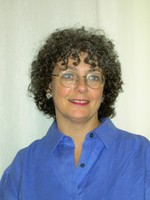
Nancy Spradling
Is a Health Aide Taking Over for the Professional School Nurse in California: Who’s Caring for Your Kids? by Nancy Spradling
Since Prop 13 was passed in California, in 1978, many school districts have chosen to neglect or ignore the issue of school health. Some claim it is an issue of funding, and without appropriate funding they cannot afford to have school nurses. Others insist that school nurses are not necessary. These are districts that have no idea what the needs of the students actually are and use unlicensed individuals to perform nursing duties. The Education Code mandates screenings, immunizations and services for children with health problems; it does not mandate school nurses. More and more districts are assigning healthcare and nursing responsibilities to unlicensed health clerks and school secretaries.
An estimated 400,000 children in California suffer from food allergies. The incidence of peanut allergy has doubled, in the last 5 years. In California, asthma affects nearly 1 in 5 students, and some school districts have as many of 25% of their students diagnosed with asthma. Diabetes, types 1 and 2 are rising, with many more students needing insulin during the school day. Students are attending school, and are members of regular education classrooms, with cardiac conditions, seizure disorders, cancer, transplants, mental health issues and a variety of syndromes. Many districts, if not most, have students who take medication on a regular basis.
California now has 9,671 public schools, with 6,286,943 children in attendance (06-07 school year). According to the CA Department of Education, school districts reported 2,804 FTE school nurses (not all are credentialed, but the districts report them as such) with an average ratio of 1 nurse to 2242 students. Approximately half of the districts actually have no school nurses at all, and many that do claim nurses have a much higher ratio, than the average. There are districts in California whose nurses have caseloads of 5000 students, and more.
The recommended ratio, from the US Department of Health and Human Services, is 1:750 for the well student population, 1:225 for mainstreamed population and 1:125 or fewer in severely chronically ill or developmentally disabled populations, and based on individual needs in medically fragile populations.
In California, a credentialed school nurse is a licensed, registered nurse, with a baccalaureate degree. In addition, a school nurse has taken a minimum of 27 units, post-graduate, in school health issues, pediatric development and assessment, adolescent mental health, special education and mainstreaming, education code, working in the education system, and a variety of other courses, resulting in a credential from the CA Commission on Teacher Credentialing. On the other hand, a school health clerk – also called health aide, health tech, or whatever job title the district creates – usually has just a high school education, and may or may not have CPR and first aid certification, and does not have the appropriate licensure to administer medications, or to assess a student’s health condition.
For more information, please contact:
California School Nurses Organization
Nancy Spradling, Executive Director
Office: 916-448-5752
www.csno.org
